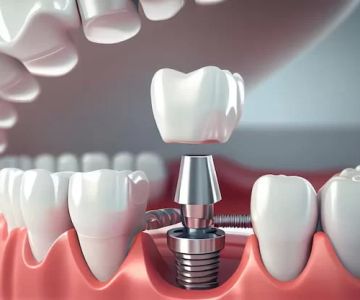1. Factors Affecting the Lifespan of Dental Bridges
The longevity of dental bridges is determined by several factors. These include the material used, the placement technique, and how well you take care of your oral hygiene. For instance, porcelain bridges tend to last longer than metal-based ones, but their durability can be compromised by heavy biting or grinding.
Additionally, the overall health of your gums and teeth plays a significant role. Bridges anchored to healthy teeth with a strong root foundation typically last longer than those attached to weakened or compromised teeth. Regular dental visits can help detect potential issues early on, preventing premature failure.
2. The Average Lifespan of Dental Bridges
On average, dental bridges last anywhere from 5 to 15 years, with proper care. Many patients find that their bridges perform well for a decade or more. However, like any dental restoration, bridges are not permanent and will eventually need to be replaced due to natural wear or changes in your mouth's structure.
Factors such as your lifestyle choices (e.g., smoking or excessive sugar consumption) can influence how long your bridge lasts. Keeping these factors in mind will help you maintain your dental health and ensure the longevity of your dental bridges.
3. How to Maintain Dental Bridges for Longevity
Maintaining dental bridges is key to extending their lifespan. Good oral hygiene practices, such as brushing twice a day, flossing, and using mouthwash, will help prevent plaque buildup around the bridge, reducing the risk of gum disease or decay. Regular professional cleanings by your dentist are also essential for maintaining the structure of your bridge.
Moreover, wearing a night guard can help protect your bridge from damage caused by teeth grinding, which can significantly reduce its lifespan.
4. When Should You Replace Your Dental Bridge?
Signs that it may be time to replace your dental bridge include discomfort, noticeable wear and tear, or a loose bridge. If you notice any changes in how your bridge feels or functions, it's important to consult with your dentist right away.
Additionally, if the supporting teeth or gums around your bridge begin to show signs of decay or disease, this could compromise the integrity of the entire structure, requiring a replacement. Don't ignore these signals, as acting early can save you time, money, and potential oral health problems.
5. Real-Life Experiences with Dental Bridges
Many people who have had dental bridges report significant improvements in their quality of life, from restoring their smile to improving chewing functionality. For instance, John, a 45-year-old office worker, shared his experience of getting a dental bridge after losing a molar. "It was a game-changer for me," he said. "I can eat normally again without feeling self-conscious about my smile."
However, just like any medical procedure, experiences vary. Some patients encounter challenges, such as adjusting to the new bridge or dealing with gum irritation. It's crucial to discuss potential risks and expectations with your dentist before undergoing the procedure.
6. Exploring Different Types of Dental Bridges
There are various types of dental bridges available, each designed for different needs. Traditional bridges are the most common, requiring two crowns to support a false tooth in the middle. Cantilever bridges, used when there's only one adjacent tooth, and Maryland bridges, which use a metal framework, are other options that can be considered based on your unique dental needs.
Before making a decision, it's important to consult your dentist to determine the best option for you. Each type has its advantages and may be more suitable depending on factors like the location of the missing tooth and the health of surrounding teeth.
7. Why You Should Consider Getting Dental Bridges
If you're considering restoring your smile or improving your oral function, dental bridges are an excellent option. They help fill in gaps left by missing teeth, improve your bite, and prevent surrounding teeth from shifting.
At Dentistry Toothtruth, we offer a range of dental solutions tailored to your needs. Visit Dentistry Toothtruth to explore the latest dental bridge options and learn how we can help you regain confidence in your smile.







 Maui Whitening Orlando4.0 (32 review)
Maui Whitening Orlando4.0 (32 review) Bloomington Southside Dental Care3.0 (26 review)
Bloomington Southside Dental Care3.0 (26 review) Christiana Dental Center4.0 (650 review)
Christiana Dental Center4.0 (650 review) Carolina Dental Arts - New Bern Ave4.0 (152 review)
Carolina Dental Arts - New Bern Ave4.0 (152 review) Equitas Health Short North Medical Center3.0 (96 review)
Equitas Health Short North Medical Center3.0 (96 review) Prosthodontics of Madison - Kendra Schaefer, DMD & Christine Roenitz, DMD4.0 (25 review)
Prosthodontics of Madison - Kendra Schaefer, DMD & Christine Roenitz, DMD4.0 (25 review) The Importance of Oral Health Education During Pregnancy for a Healthy Pregnancy
The Importance of Oral Health Education During Pregnancy for a Healthy Pregnancy Best Tips for Brushing Your Teeth Properly for Healthy Gums: Essential Techniques for Oral Health
Best Tips for Brushing Your Teeth Properly for Healthy Gums: Essential Techniques for Oral Health Why Skipping Dental Checkups Can Lead to Bigger Oral Health Problems
Why Skipping Dental Checkups Can Lead to Bigger Oral Health Problems Advantages of Porcelain Dental Restorations
Advantages of Porcelain Dental Restorations How Can Diabetes Cause Tooth and Gum Problems? Preventing and Managing Oral Health Issues
How Can Diabetes Cause Tooth and Gum Problems? Preventing and Managing Oral Health Issues Healthy Habits for Promoting Good Oral Health and Hygiene: Tips for a Healthy Smile
Healthy Habits for Promoting Good Oral Health and Hygiene: Tips for a Healthy Smile